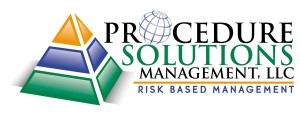3 Tips For Starting a Procedure Project from Scratch
Are you starting a new procedure project from scratch and having trouble getting started?
For many people at the onset of an important project (procedure or otherwise), starting is the hardest part. A large or complicated project can seem overwhelming or intimidating. Some people are slowed by analysis paralysis, focusing on specific details before having a grasp of their overall goals. Others start without ever thinking anything through and hope things just work out along the way.
Setting up a project for success is actually fairly easy with a little forethought and structure. Below are three tips to help you get a quick and sustainable jump on your new project.
-
Do your research.
Review all existing workflow process maps and compliance/business requirements for the procedures and processes you will be writing. The length or detail of the process maps is fundamental to the development of procedures that will meet or exceed the human factored procedure program requirements. While evaluating a process map, it is vital to receive 100% alignment from management and the subject matter experts. Having this alignment will prevent re-work and confusion down the road, as well as setting the correct level of detail. This research must be complete prior to building the step-by-step instructions. Failure to do this may result in embedding unnecessary human error likely situations as a result of direction changes that can occur during step reorganization.
-
Establish a plan with clear expectations.
It’s extremely important to establish a mutually agreed to foundation and framework of the project. This typically includes a charter and project schedule. This will ensure the controls are in place throughout the lifecycle of the project to guarantee a sustainable and successful plan. Start by developing a high-level schedule, or lifecycle, that each workflow process map (or procedure) will follow from beginning through finalization and publication. Consider research, writing, reviewing, incorporation of comments, and approving, as well as metric milestones as needed.
-
Assemble the right team.
Involving the right personnel is key to the success of a procedure project. The team can either be working face-to-face or via web conferencing. There should be a team lead (Project Manager – in some cases this may also be the procedure writer), procedure writers, reviewers, approvers and dedicated subject matter experts assigned as points of contact. Obtain a listing and contact information of key personnel and subject matter experts and their availability. Include phone numbers, email contacts and notes indicating task/level of involvement. Consider the availability of subject matter experts to address questions timely (in addition to their day to-day work load) as another important factor when assembling the team and creating the project schedule.
For more information on Human-Factored Writing and other Procedure Writing Tips, subscribe to our blog using the link to the right of this post. Or, visit our services page for more information on our staffing, training, or consulting services.



![A critical step as defined by the Institute of Nuclear Power Operations (INPO) is: “A procedure step, series of steps, or action that, if performed improperly will cause irreversible harm to plant equipment or people or will significantly impact plant operation.”[1]](https://proceduresolutionsmgmt.com/wp-content/uploads/2016/11/powerlines-845x321.jpg)




